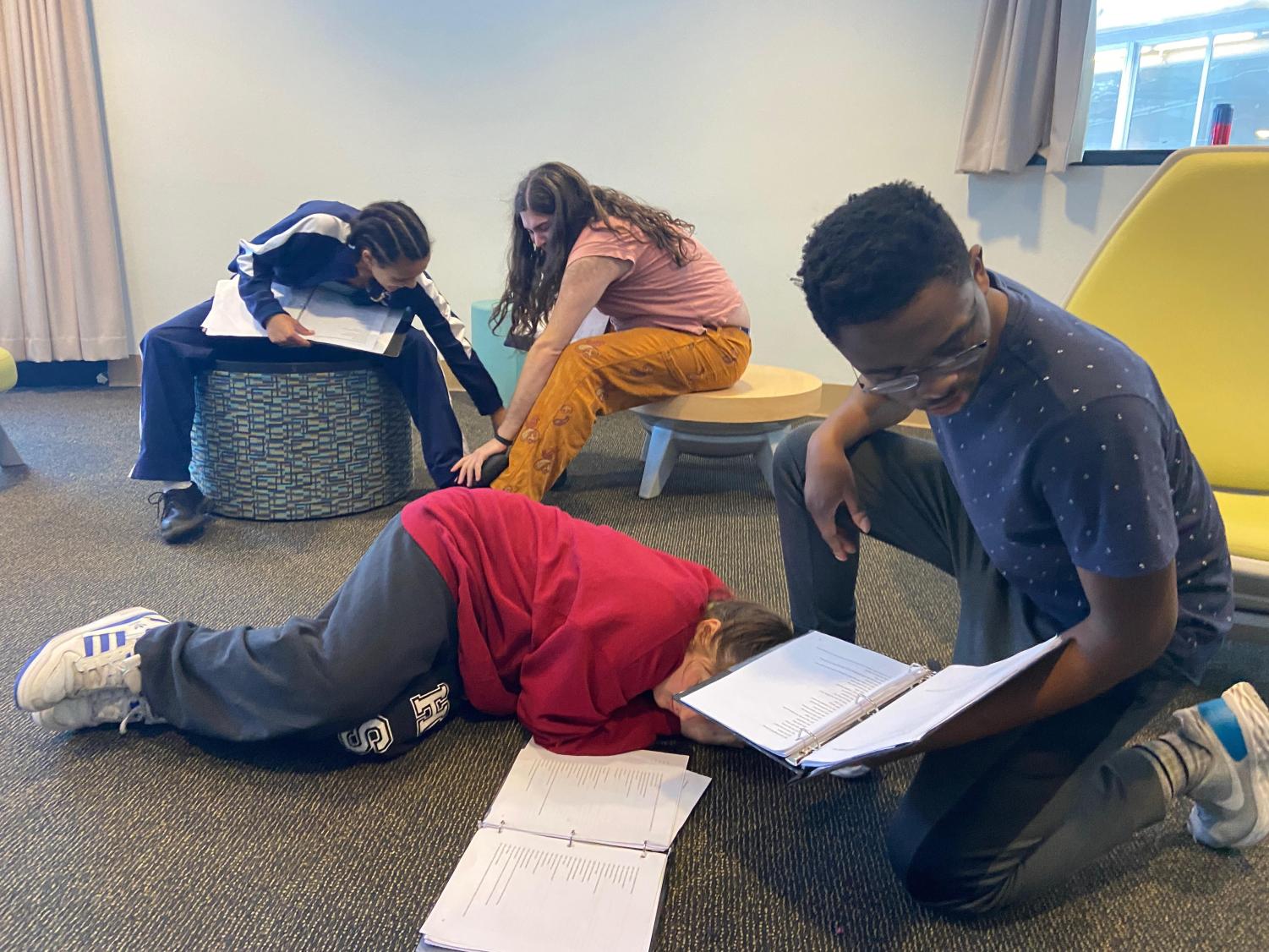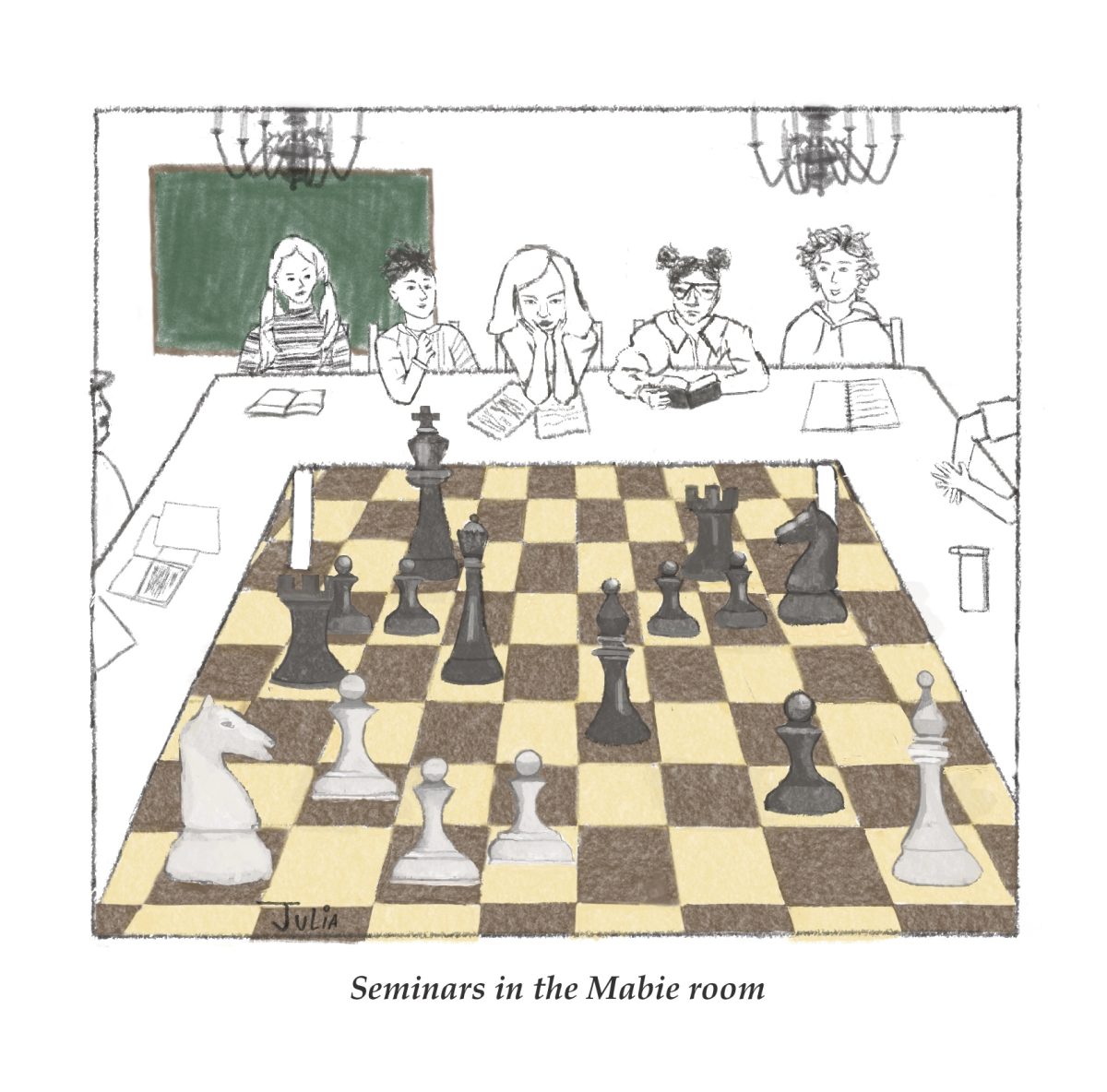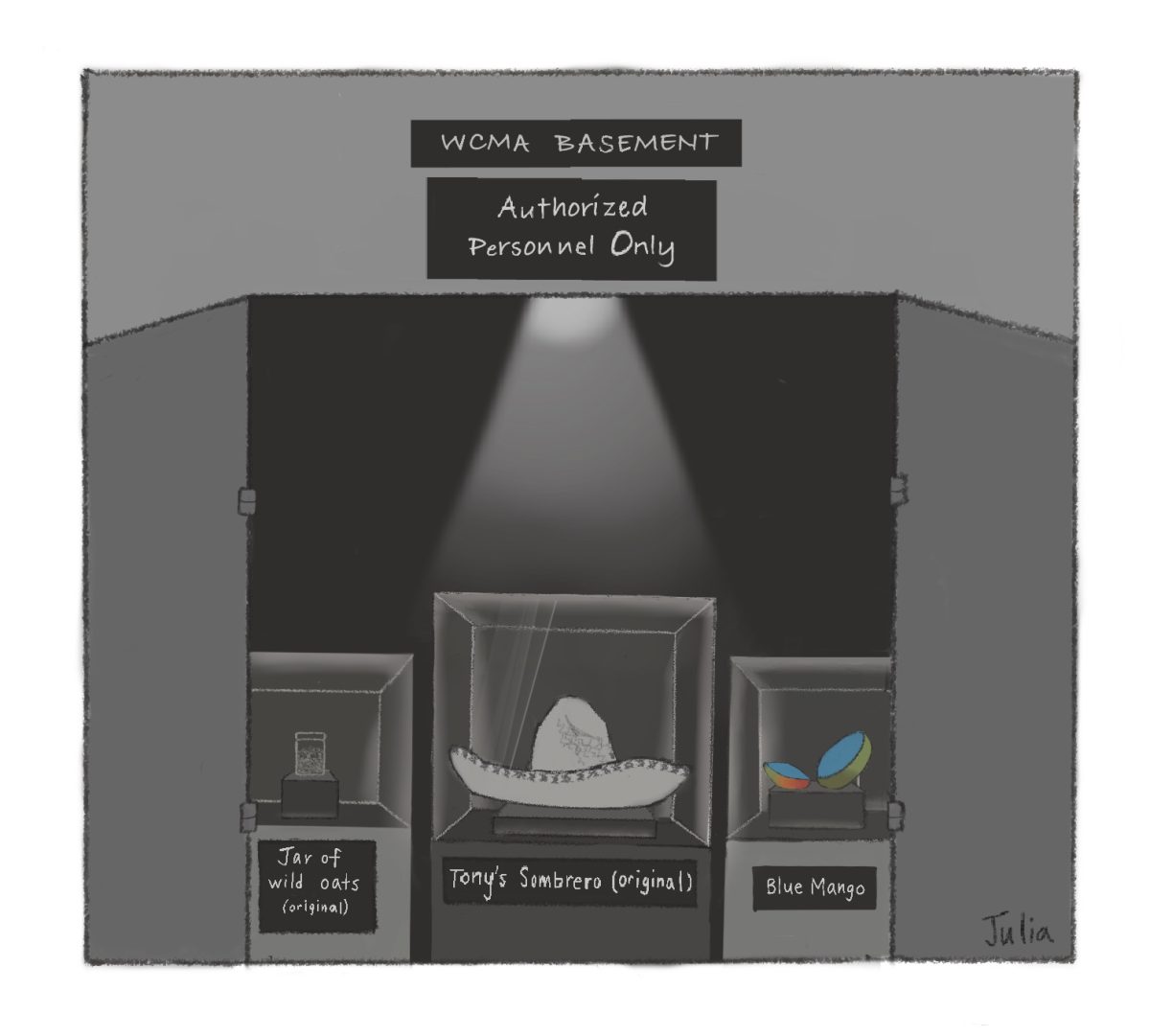Students perform 24-hour play in Mission Lobby
February 8, 2023

A one-hour play about four characters stuck in a desert may seem like a simple feat at first. But when it debuted at the College, there was one catch: the play was put on 24 consecutive times over the course of one day — from 9 a.m. on Jan. 25 to 9 a.m. on Jan. 26 — in the lobby of Mission Park. To take on the production that would eventually become Ella Talerico’s Sandbags, director Ryan Crants ’24 recruited his friends: Petra Hinds ’24, Eddie Wolfson ’23, Obi Nwako ’24, and Francie Brewster ’25 acted in the play, and Sari Klainberg ’25 stage-managed and assistant directed.
The show took on a number of differences from typical productions put on at the College. Besides the fact that it was put on 24 times in a row, there was also a clock on a nearby TV screen. While performing, the actors watched the clock to make sure each run took up exactly one hour and started right on the next hour.
Some of the actors reflected on another unique aspect of the production: A livestream continued throughout the whole performance. “I’ve never acted in any context where I had a live stream and could see myself while I was performing,” Hinds said. “[It was] very strange, very different.”
Crants described his excitement about being able to try new theatrical elements. “I really like experimental theater things that push those boundaries between performance art and theater and explore the genre and what it can do,” he said.
Crants came up with the idea of a one-hour play performed 24 times consecutively during his first year at the College. The idea became a reality after Crants commissioned a playwright friend, Talerico, to write the piece over the summer. Crants directed another production, Biophilia, by the same friend, who is a student at Vassar, last spring.
“I had been looking at different scripts having to do with time and time loops and exhaustion and various things,” Crants said “I hadn’t found one that I liked exactly because I had somewhat arbitrarily become attached to the idea of it being exactly one hour and doing that 24 times… I just liked the symmetry of that.”
Although Crants’s proposal to produce the show during Winter Study with Cap & Bells was rejected, he still felt determined to put on the play. “I certainly don’t blame Cap & Bells,” he said. “I think that there was not a lot of doubt in my mind that I was just going to do it anyway. I didn’t think that we really needed a budget or anything, and I didn’t think that it would be that hard to just find the group of people to get together and do it.”
Logistically, the play faced challenges getting on its feet. Its organizers had to find somewhere where they could perform for 24 hours straight, provide food for the cast and crew, and coordinate the six packed schedules to find times to rehearse and perform.
Cast members described the challenges of performing for 24 hours straight. “It was very torturous,” Nwako said. ‘I didn’t anticipate how much pain my throat would be in.”
Despite the difficulty of the show, Nwako said he was able to learn from the process and enjoy himself.
“I had to change the way I performed for my own health,” he said while discussing the need to control his volume. ‘That led me to discover very different characters and interpretations.”
Crants and Klainberg additionally came up with tactics throughout the show to keep the cast’s energy up. “We kept doing weird silly runs, like the one where the floor was lava,” Hinds said. The actors also made changes like performing an entire show in British accents or switching their props. “I’m very, very grateful that I had those five people with me because I think we all kept each other going through that time,” Crants said. “All of the actors and myself had a couple of runs where we were a little low on energy, but somebody was always there to push everybody else along.”
While Crants said Talerico’s style of writing is often abstract and experimental, the text’s meaning became increasingly clear to the actors with each show. “This play to me is about the struggle and the triumph of finding joy in everyday life,” Crants said. “This desert that our four main characters are trapped in ultimately ends up being somewhere that they’ve been trapped because they’re finding it hard to find joy in their lives.”
The last scene of the last show served as a resolution for the characters and the actors. After the four characters have been stuck in the desert for over 23 hours, it finally rains.
“Somebody had a line like, ‘What’s that sound?’” Hinds said. “We all got quiet and it was really raining outside. You could hear the rain on the roof of Mission and it just really started to hit. I started to tear up as though I had been in a desert for some unknown period of time. Once it ended, it was just so cathartic.”
While Crants said he may not undertake a similar project again, others were more inclined to. “I would do this once a year max,” Klainberg said. “I loved [working on Sandbags]. It made me proud. Am I still sick from it? Yeah, but also, we did that.”
Editor’s note: Francie Brewster ’25, an executive editor for the Record, was involved in the production of Sandbags but was not involved in the writing and editing of this article.








